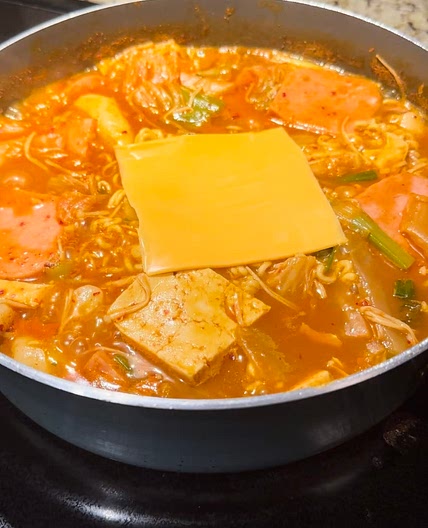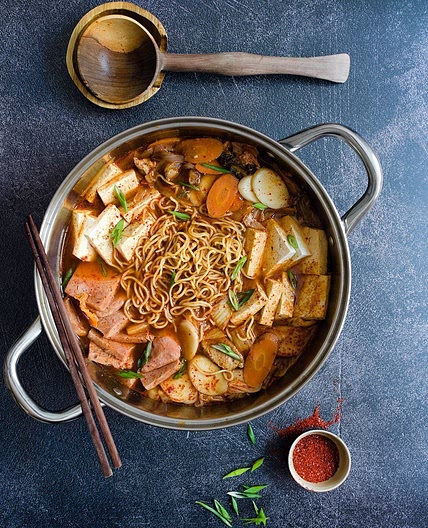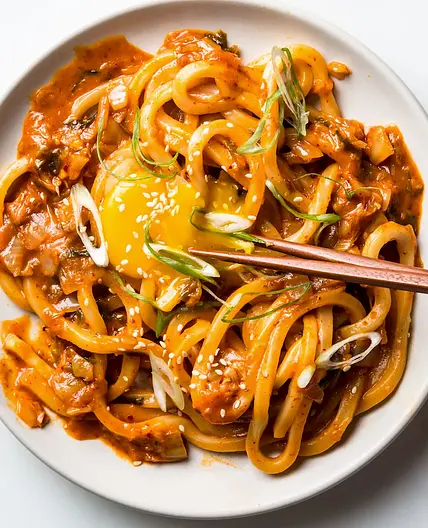By mr
sundubu jjigae (kimchi tofu stew)
In an ideal world, the kimchi you’re using should be perfectly “ripe,” meaning it’s been fermented long enough to give you that funky, sour, developed flavor (all the reasons to love kimchi). When Suze and I were making this, our batch of kimchi was a little on the “young” side, so we compensated for lack of flavor by adding fish sauce (for funkiness) and rice wine vinegar (for acidity). Depending on what you’re working with, you may find that you don’t need either ingredient, which is why they’re listed as optional.
Re: the heat level, that is *also* a personal choice. I prefer mine on the spicy side. That said, I recently made a batch and served it to a friend who said “I have never had anything so spicy in my life” as I was drinking the broth from the bowl. So, go easy at first with the gochugaru and adjust as needed after adding the kimchi. - Alison Roman
Updated at: Wed, 16 Aug 2023 20:34:17 GMT
Nutrition balance score
Uh-oh! We're unable to calculate nutrition for this recipe because some ingredients aren't recognized.
Ingredients
5 servings
2 tablespoonsgrapeseed oil
vegetable, or olive
0.5onion
medium, diced
4 clovesgarlic
thinly sliced
1scallion
large, or 2 regular scallions, thinly sliced, plus more for serving
2 teaspoonsgochugaru
korean red chili flake, plus more
¼ cupgochujang
korean red pepper paste, plus more
1 tablespoonsoy sauce
plus more for seasoning
1 ½ cupskimchi
coarsely chopped, plus 1/4 - 1/2 cup kimchi juice
2 packagessilken tofu
drained
Rice wine vinegar
as needed, optional
Fish sauce
as needed, optional
eggs
for serving
Sesame oil
for serving
Radishes
baby turnips
scallions
perilla leaves
for serving, optional
rice
cooked, for serving
Instructions
Step 1
In a large dutch oven, heat 2 tablespoons olive oil over medium heat. Add the onion, garlic, and scallion, and cook, stirring often, until they’re nicely softened but have no color, 5–7 minutes. Add the gochugaru and cook for a minute or two, just to toast and bloom the flakes.
Step 2
Add the gochujang and cook, stirring often, until it turns a darker brick red (almost like tomato paste would) and starts to stick to the bottom of the pot, a minute or two. Add a splash of water and 1 tablespoon soy sauce, scraping up the stuck-on bits with a wooden spoon.
Step 3
Add 4 cups water and increase the heat to medium-high. Add the kimchi and kimchi juice and bring to a strong simmer. Taste the broth and season with fish sauce, salt, or soy sauce (depending on what it needs, flavor-wise), reduce the heat to low, and gently simmer until all the flavors come together and the kimchi has softened, 10–15 minutes.
Step 4
When the broth is where you want it, gently add the block of tofu. Using a wooden spoon, gently break the block into large chunks (“gently” is important here, too much action and the tofu will fall apart and look like scrambled eggs). Let the tofu poach in the liquid (this firms up the texture) before breaking it up into smaller bite-sized pieces. Taste and adjust seasonings, adding a splash of rice vinegar, fish sauce, or soy sauce as needed.
Step 5
To serve, divide the jjigae among bowls. Crack an egg in the stew, letting the hot broth lightly poach the white while leaving the yolk runny. Drizzle with sesame oil and top with scallions. Serve with rice, seasoned cucumbers, and other raw vegetables, and sesame oil and salt for dipping them.
Notes
1 liked
0 disliked












